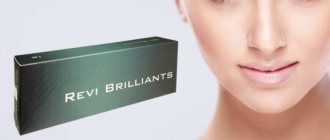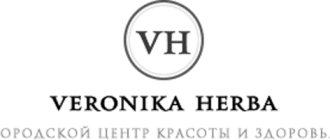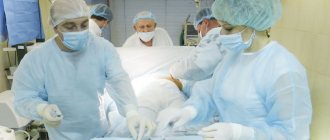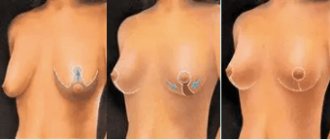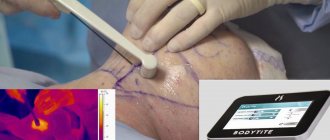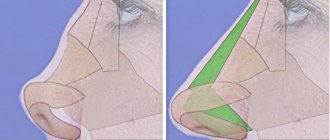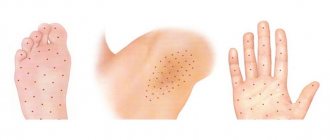Correction of breast sagging, or mastopexy, is one of the fairly popular surgical interventions in plastic surgery, although it is inferior to breast augmentation. Therefore, many women want to know how the operation is performed, what needs to be done to get the best possible result and what to expect in the end.
From a technical point of view, such an operation is quite complex, and therefore requires the surgeon to have extensive experience, high qualifications and extensive knowledge of existing intervention techniques. But the end result can be called impressive. Mastopexy is effective for those who have lost the appearance of their breasts after giving birth and breastfeeding, for those who have gone through age-related changes and for those with a naturally large bust.
Types of access
To understand how a breast lift is performed, you can familiarize yourself with existing surgical techniques. Mastopexy is performed using one of three methods:
- periareolar,
- vertical,
- T-shaped.
The techniques differ in the way of cutting. A periareolar incision is made around the circle of the nipple areola, a vertical one - around the circle of the areola and vertically from its lower edge to the fold under the breast, a T-shaped (anchor) - around the circle of the areola, vertically to the fold and horizontally in the fold itself.
The choice of method is made by the surgeon depending on the patient’s situation and the degree of ptosis. The periareolar method is suitable if there is slight ptosis or small breast size. Vertical is indicated for patients with more severe ptosis. An anchor incision is performed in cases of significant prolapse and very large bust size.
Comprehensive figure correction: beautiful body, all at once!
It is natural for any woman to want to have an attractive appearance and a beautiful figure. There are many secrets to maintaining beauty, but a real miracle of transformation can only be accomplished by aesthetic surgery.
A slim figure can be lost for various reasons. And for women, postpartum changes come first: fullness, the appearance of folds on the abdomen, an increase in the “breeches” on the hips, sagging on the lower back, breast deformation, a decrease or increase in its size, loss of its elasticity.
The desire to return to previous forms is quite understandable. For the sake of a slim figure, we are ready to do a lot: we try to reduce it in one place with the help of hardware procedures, increase it in another, we burn off the excess in the gym, we steam in a plastic cocoon with algae masks... And if we try very hard and spare no expense, we achieve good results. But just... the breasts still hang, and, despite the weight loss, the “ears” on the hips do not disappear, and the fold on the stomach does not seem to give up, despite the diet, injections, machines and exercise machines. And we crave results, fast and reliable, now and for a long time...
Capabilities of the Center for Cosmetology and Plastic Surgery named after S.V. Nudelman is allowed to fulfill this desire.
surgical abdominoplasty (abdominoplasty) can remove the so-called “apron” formed due to excess skin and fat tissue.
. In this case, the surgeon not only removes excess loose skin, but also restores the stretched muscles of the anterior abdominal wall, recreating the muscular frame of the abdomen. The stomach tightens, its skin becomes smooth and elastic again.
As for the “breeches” or “ears” that stubbornly stick out on the hips, there is nothing more effective in this matter than liposuction. This is a guaranteed removal of fat from any part of the body - proven by the experience of millions of women around the world. The total cost of tummy tuck, including all costs in the clinic, starts from 171 thousand rubles.
(the given cost is calculated from the price of mini-abdominoplasty).
Breast lifting or tightening ( about 160 thousand rubles.
, including all costs in the clinic)
corrects the shape, eliminates its drooping and returns its former elasticity. And if the initial breast size is quite satisfactory, there is no need, contrary to popular belief, to get implants. Implants are needed only if the size of the mammary glands decreases or their asymmetry occurs (a difference in size and level of position). This happens (and often) after breastfeeding ends. The cost of breast augmentation is
from 168-198 thousand rubles. depending on the implant model , including all costs in the clinic.
Sometimes the situation develops in the opposite way: the mammary glands become excessively enlarged during pregnancy and lactation, and the breasts lose their beautiful shape. Many patients even complain of back pain from the load on the spine. In this case, breast reduction is performed ( from 190 thousand rubles.
, including all costs in the clinic)
and simultaneous lifting.
Often, postpartum changes affect not a separate part of the body, but the entire figure.
Special opportunities of such a clinic as the Yekaterinburg Center for Cosmetology and Plastic Surgery named after S.V. Nudelman, allow women to make aesthetic correction of their entire figure at once, of course, if there are no individual medical contraindications. With complex body correction, all operations are performed at one time, which is extremely convenient for the patient (there is no need to undergo several surgical interventions and find time for hospitalization and recovery several times; you can save not only time, but also money - on anesthesia, examination and hospital stay hospital).
All problems are solved simultaneously, even if operations are also required for medical reasons - for example, removal of fibroids or cysts, treatment of endometriosis, or correction of the consequences of a difficult birth.
By comprehensively correcting her figure at the S.V. Nudelman Center for Cosmetology and Plastic Surgery, a woman gets the opportunity to regain her attractiveness, dress fashionably, and look younger. And this means enjoying life!
Reception of plastic surgeons is free - on weekdays from 10 to 18 hours (on Thursdays - from 12 to 18 hours), on Saturdays - from 10 to 16 hours by appointment by phone.
If you live not in Yekaterinburg, but in another city in Russia, we conduct consultations remotely, using photographs. Please read the terms and conditions for receiving a remote consultation on the “How to get a consultation” page.
ATTENTION! Smoking negatively affects the outcome of the operation, causing serious complications such as tissue necrosis. If you smoke, you must quit smoking 2 months before surgery.
For body correction surgeries (chest, abdomen, hips), patients pay for compression garments.
Patient reviews
Comprehensive figure correction: breast reduction and abdominoplasty.
Comprehensive figure correction: breast reduction and tummy tuck.
THERE ARE CONTRAINDICATIONS, SPECIALIST CONSULTATION IS REQUIRED
Anesthesia
Anesthesia plays a very important role during surgery. The method and drugs are selected by the anesthesiologist before the operation based on consultation with the patient and data from tests and examinations. During the tightening, one of the following anesthesia options can be used:
- intravenous,
- inhalation, intubation or endotracheal,
- sedation in combination with local anesthesia.
Intravenous anesthesia is prescribed to young patients without health problems. Inhalation allows the anesthesiologist to control the depth, and the surgeon to not be interrupted during his work to introduce a new portion of medications. Sedation, as a separate method, is used very rarely, but local anesthesia is almost always used for any type of anesthesia.
Technique
The process of how a breast lift is performed does not vary much from one clinic to another or from one doctor to another. The operation begins with the application of preoperative markings to the places where incisions will be made to access the intervention area. The scheme is developed before the operation together with the patient, taking into account her individual anatomy, current situation and desired result.
When the patient gets on the operating table, the surgeon makes incisions according to this pattern. The doctor then excises excess skin, fat and glandular tissue and repositions the nipple-areolar complex. At this stage, the surgeon is required to be extremely careful and competent, since violation of the technique can lead to loss of sensitivity in the bust area. It should be noted that a successful operation does not affect the ability to breastfeed in the future, since the integrity of the milk ducts is not affected.
After all manipulations are completed, sutures are applied, a fixing bandage is applied, drainage is installed and compression garments are put on. In the future, underwear will be required to be worn around the clock for three months.
Mammoplasty (breast surgery)
- about the surgeon
- news
- operations
- prices
- photo gallery
- reviews
- contacts
Tel.
LIFTING A procedure that eliminates drooping cheeks, smoothes nasolabial folds, and restores the contours of the neck and chin.
Find out more ›
ABDOMINAL PLASTY is an operation whose purpose is to create (restore) an aesthetically correct anterior abdominal wall and, as a result, harmonious proportions of the body and waistline.
Find out more ›
BREAST CORRECTION plastic surgery on the mammary glands.
Find out more ›
LIPOSUCTION Removal of fat deposits.
Find out more ›
Reconstructive surgery of congenital maxillofacial pathology of cleft lip and palate, micro- and anotia.
Find out more ›
Mammoplasty is a plastic surgery on the mammary glands, which involves changing its shape and (or) changing its size. Speaking about mammoplasty as such, we can divide it into several fundamentally different areas, which often set themselves diametrically opposed tasks, and, however, fall under the above definition.
So. The first type of mammoplasty is breast augmentation, or augmentation mammoplasty . In the vast majority of cases, it is performed using special implants, which is why another name is breast replacement. This operation is indicated for: hypoplasia of the mammary glands (small breasts) or micromastia (very small breasts, which is a congenital pathology), post-lactation involution of the mammary glands (when the mammary glands significantly decrease in size after the end of natural feeding of the child with breast milk). Often this operation is used as a stage to correct asymmetry of the mammary glands, with ptosis (drooping) of the mammary glands, when, along with a change in shape, an increase in volume is also required. Finally, the indication for this operation may simply be the patient’s reasoned desire to enlarge her breasts.
To perform augmentation mammoplasty, special implants (prostheses) are used. They vary in shell texture, shape (round or anatomical), size and filling. The material from which they are made is resistant to pressure and tearing, and the gel filler ensures long-term retention of the shape and the feeling of natural fabric. Prostheses of this kind can remain in the body for 15 years or more; after this period, if necessary, they can be replaced with new ones.
Today there are over three dozen implant manufacturers in the world. I will say right away that I use implants from only two manufacturers. These are Mentor ( MENTOR ) and McGhan, now owned by the Allergan Corporation ( McGhan ALLERGAN). Simply because during my work with these manufacturers (since 1996, more than five hundred similar operations) I have not had any problems related to the quality of implants. I am not an advertising agent, and in no way promote these brands, but what is important to me is that these are the “oldest” manufacturers on the market, with enormous experience, their own research base, and, as a result, the highest quality. It is quite possible that the quality of implants from other manufacturers is no worse - but, I repeat, I do not have much experience working with them.
Incision . In most cases, the choice of incision site is left to the patient. The location of the incision in surgical practice is referred to as “access”. According to world statistics, about 90% of all approaches for augmentation mammoplasty are submammary (a small incision is made in the natural fold under the mammary gland, and subsequently, occupying a position in the natural fold, is hardly noticeable). This access is the most secure, controlled and predictable. The second most common place is occupied by the periareolar approach, in which the incision is made along the border of the dark circle of the areola and the lighter skin of the breast itself, and occupies from 30 to 60 percent of the circumference of the areola. Access is very good in aesthetic terms (almost invisible in the future), but it has some contraindications and disadvantages. The third option is the axillary approach, or an incision in the armpit. It also has its pros and cons. Finally, paraumbilical access - with this option, an incision is made in the navel area, and using endoscopic technology, the implant is installed in the required location. This approach has a limited number of indications and is performed infrequently.
Implant position . Depending on the anatomical features of the patient, the implant can be installed either under the gland (between the gland and the pectoral muscle) or under the pectoral muscle. It is pointless to talk about the advantages of one method or another without reference to a specific organism, since each of them has its own indications, and, consequently, advantages in each specific case. The areola and nipple increase in proportion to the new breast size. In the normal course of the operation, it ends with cosmetic suturing of the incision without installing drains.
Breast replacement is also indicated for breast asymmetry and breast reconstruction after mastectomy (breast removal). For this purpose, a Becker expander prosthesis is often used, which allows you to create the necessary shape and volume of the breast over a period of time.
I would like to draw attention to several fundamental points regarding augmentation mammoplasty. First. A modern breast implant (aka endoprosthesis), produced by the main, most well-known manufacturers (as I already mentioned, Mentor, McGann, etc.), does not in any way affect reproductive function! That is, if you have an implant, you can become pregnant, give birth, and breastfeed without any fear!
Second. You can often hear questions from patients about the risk of cancer. To date, over 12 million (!!!) augmentation mammoplasties have been performed in the world. A powerful statistical base has been accumulated. So, the incidence of breast cancer in the operated group is less than the average statistical data for the population as a whole. Of course, it is quite possible that the fact that patients who become aesthetic surgery clients simply monitor their breasts more regularly and, in general, undergo follow-up examinations more often, also plays a role here. But the main thing is that it has been proven using vast statistical material that implants do not affect the risk of cancer!!!
Third. The largest manufacturers of implants (see above) have in recent years begun to provide a lifetime warranty on implants. But this does not mean that they provide a guarantee of results for the entire life of the patient! We are talking about guaranteeing the quality of the product, guaranteeing the integrity of its shell, the strength properties of which exceed the lifespan of a human being. As for aesthetic results... Alas, we can only slow down the aging process, but not stop it completely. Therefore, it is not the quality of implants, but age-related changes that are the basis for determining the period of “wearing” implants. By the way, according to average world data, the average time for which we guide patients is 15-20 years. After which, perhaps, the question will arise about replacing implants, or some other breast correction (15-20 years is a fairly large “piece” of life, during this time the elasticity of tissues changes, some age-related changes appear that may require additional correction breasts. Or maybe not - every person is unique.)
The second type of mammoplasty is breast reduction, or reduction mammoplasty . Its main goal is to form the optimal shape of the mammary glands, with a minimum number of incisions and stitches. During the operation, excess breast tissue and subcutaneous fat are removed, then a new shape and size is formed. I note that reduction mammoplasty is usually performed with a simultaneous breast lift. In case of sagging glands, the skin and underlying glandular tissue are removed, and the remaining tissue is fixed in its normal position.
Resection (removal) of excess mammary gland tissue, which is carried out during reduction mammoplasty, reduces the risk of malignant degeneration of the gland, since as a result of mastopathy (a very common pathology of the mammary glands), the glandular tissue is often changed.
In case of ptosis of the mammary glands (the dimensions are preserved, but the breasts are drooping), reduction breast plastic surgery is also performed, but in the form of mastopexy, in which only excess stretched skin is removed, and resection of glandular and fatty tissue does not occur. The essence of the operation is to create a new form of the gland, while the tissue of the gland is redistributed and fixed in a new position. Often this operation is combined with augmentation mammoplasty, that is, not only the sagging (drooping) of the mammary glands is eliminated, but also their enlargement.
When applying skin cosmetic sutures, absorbable and non-absorbable materials are used, which provide not only good healing, but also an excellent aesthetic effect. When sutures are applied using traditional materials, they are removed 12-14 days after surgery.
There are several main options for breast reduction:
Short (vertical) seam method. This method is popular among patients, as it has a number of advantages - the nipple retains its sensitivity, the plastic surgery does not last long, the natural shape of the breast is preserved, and the percentage of complications is low. This technique is used most often for breast reduction and for eliminating ptosis.
T-shaped or anchor cut. This is a classic method of breast reduction, although recently it has been used quite rarely. It is recommended to be used when a large volume of resection is planned. There are two disadvantages here: the length of the sutures and the time-consuming operation.
Periareolar incision. An interesting technique that gives a very good aesthetic result (the scar just around the areola is ideal aesthetically). However, it is indicated only for ptosis of the mammary glands with preservation of volume, or with very small reductions. It is also widely used to reduce the area of the areola, and to correct the so-called “tubular” breasts.
Liposuction. This is a method in which there are practically no postoperative sutures left. However, liposuction is recommended for women who want to slightly reduce their breasts, which should not have a pronounced degree of ptosis. And this operation is most indicated for the so-called “fat” type of breast structure.
Breast reduction for gigantomastia. These are very rare cases in which subtotal resection of the breast occurs with parallel transfer of the nipple-areolar complex in the form of free flaps. This type of breast reduction surgery is very traumatic and not very aesthetic; it is performed more for medical reasons than for aesthetic reasons. According to statistics, patients receive quite a lot of injuries, sometimes the areolas are problematic to engraft, breastfeeding is impossible after this method, and there is no sensitivity in the nipples.
Contraindications for breast surgery:
- Some cancers
- Acute infectious diseases (and exacerbations of chronic ones)
- Impaired blood clotting
- Severe diseases of internal organs
- Incomplete lactation (the operation is performed no earlier than 6 months after completion of feeding)
- Systemic connective tissue diseases (scleroderma, systemic lupus erythematosus, etc.)
- Uncompensated diabetes mellitus
- Under 18 years of age (except for mammoplasty for medical reasons)
Before surgery, the following studies are carried out:
- ECG
- General analysis of urine and blood
- Blood coagulogram (study of blood coagulation systems)
- Blood chemistry
- Test for hepatitis
- fluorography
- Ultrasound of the mammary glands (if necessary, mammography may be prescribed)
14 days before the date of surgery (provided that the patient is clinically healthy), you should not take products that contain salicylates or use hormonal contraceptives.
7 days before the operation, it is advisable to stop using cigarettes (nicotine entering the body seriously impairs blood flow), since otherwise the sutures will take a very long time to heal.
The operation is performed under general anesthesia and, depending on the type of surgery, lasts from 40 minutes to 4-5 hours.
Rehabilitation period
In the standard course of the operation, the patient is discharged the day after the operation; in some cases, the patient may leave the hospital after 3-5 days. In the first few postoperative days, the patient may experience a feeling of skin tension in the area that was affected during surgery. This is due to postoperative swelling. It is considered normal to experience moderate pain in the surgical area during the first two to three days. Major swelling subsides 5-7 days after surgery. By strictly following the doctor’s recommendations and prescriptions, the risk of complications is minimized. The most common complications are subcutaneous hematomas, hypertrophied scars, inflammatory changes in soft tissues, and scar contracture of prostheses. However, I repeat once again, the risk of complications is minimized.
| Read more: | Preparing for breast augmentation surgery Photos before and after mammoplasty |
Sections of the site:
- Abdominoplasty
- Nose job
- Eyelid correction
- Removal of fat deposits
- Ear correction
- Facelift
- Prices
- Reviews
Periareolar incision
The surgeon will tell you in detail how a breast lift is done using a periareolar incision before the operation. This is the most minimal degree of intervention, but the technique is not suitable for all patients. With this type of access, only a small degree of ptosis can be corrected.
The degree of breast sagging (ptosis).
After the operation is completed, for the first time, folds may be observed in the bust area, which subsequently smooth out on their own. Traces of intervention become completely invisible over time. The bust looks natural and firm. Very often, surgery with this type of access is combined with the installation of implants. This technique allows you to install implants of almost any size (with some exceptions), including the most popular ones with a diameter of 10-12.5 cm.
Breast reconstruction after mastectomy
Most women who have lost their breasts due to cancer live in constant stress, because breast removal is often perceived by them as a death sentence. Its absence makes it impossible to wear your favorite clothes, go on a beach holiday, or go to the pool; it forces a woman to give up many of the joys of life and creates difficulties in relationships with the opposite sex. However, there is a way out.
One-stage breast reconstruction after mastectomy
(breast removal) is an operation during which the removed breast, nipple and areola are simultaneously restored, defects in the chest wall are replaced, and scars are corrected.
This operation is not overly traumatic for the patient; it is tolerated both morally and physically much easier than a destructive operation to remove the breast
.
At the Center for Cosmetology and Plastic Surgery named after S.V. Nudelman has about twenty years of experience in conducting such operations. In this case, different technologies can be used. When reconstructing with an LD flap, a flap of skin is taken from the back along with muscle and fat and transferred to the anterior chest wall, to the site where the mammary gland was removed. To recreate the volume, an implant is installed under the flap. This is how the gland is formed. The nipple is made from local tissues. The areola is formed either from healthy areola tissue, or from pigmented skin of the labia minora, or from local tissues, and tattooing is used. To recreate the area adjacent to the breast around the developing mammary gland, primary lipoplasty is performed, and one’s own fat is injected.
Subsequently, it is necessary to increase the volume by transplanting fat into adjacent tissues, possibly correcting scars and improving the shape of the other breast, if for some reason this was not done immediately.
The operation can be performed one year after completion of any type of treatment - primary breast surgery, chemotherapy or radiation therapy.
Before the operation, the clinic conducts a full examination to finally confirm the possibility of the operation (absence of serious diseases that prevent surgical intervention, absence of continued tumor growth, metastases).
Primary surgical recovery lasts 3-4 weeks, when sutures are removed and scars are treated. Complete - lasts at least a year, during which the process of tissue healing and scarring takes place.
Reconstruction
includes installation of a prosthesis, creation of an LD flap (from the back - muscles, fat and skin), formation of the nipple, formation of the areola, correction of the scar on the chest wall, in the axillary areas, primary lipoplasty around the formed mammary gland to create the area adjacent to the breast.
Recovery
it is also possible without plastic surgery with an LD flap, using an expander and injection of the patient’s own fat. In this case, several fat grafting procedures are performed - as many as required to obtain the desired size and shape. In the same way, if necessary, aesthetic correction of the shape and size of the second breast is possible - eliminating its sagging (ptosis), correcting its shape and size. The result of such operations is not just the restoration of the missing one, but the creation of the most natural, beautiful, proportional breast in shape and size.
The cost of one-stage breast reconstruction after mastectomy includes
: reconstructive surgery, high-quality anesthesia, implant, medications, 5 days in a comfortable hospital, 4 meals a day, qualified care.
An appointment to reconstruct a breast after a mastectomy with plastic surgeon Sergei Ivanovich Ryazanov is free.
If you live not in Yekaterinburg, but in another city in Russia (for example, in Moscow, St. Petersburg, Novosibirsk, Nizhny Novgorod, Kazan, Rostov-on-Don, Volgograd, Samara, Omsk, Chelyabinsk, Ufa, Tyumen, Perm, etc. .) we conduct consultations remotely, using photos. Please read the terms and conditions for receiving a remote consultation on the “How to get a consultation” page.
ATTENTION! Smoking negatively affects the outcome of the operation, causing serious complications such as tissue necrosis. If you smoke, you must quit smoking 2 months before surgery.
For body correction surgeries (chest, abdomen, hips), patients pay for compression garments.
THERE ARE CONTRAINDICATIONS, SPECIALIST CONSULTATION IS REQUIRED
Vertical section
It is also a very gentle technique, implying a small volume of excised tissue. But unlike periareolar, it allows you to cope with higher degree ptosis. The sensitivity of the breasts and nipples is not impaired, the ability to breastfeed is preserved as with other methods of access. The disadvantages of the method include its ineffectiveness in cases of significant prolapse of the glands.
Some women are concerned about the visibility of the vertical scar that runs from the bottom edge of the areola to the fold under the breast. But a qualified surgeon always performs suturing in such a way that traces of the intervention are as less noticeable as possible. Much also depends on the patient herself: how carefully she paid attention to the doctor’s recommendations during the recovery period. If all instructions are followed strictly, the scars will be completely invisible.
T-cut
It is useful for patients with severe ptosis to know how a breast lift using the anchor method works, since this technique is the most effective for this situation. The surgical technique is very complex, but the final result is impressive. During the operation, a considerable amount of tissue is excised. This technique involves the largest number of cuts, but you should not be afraid of any marks. As with other types of lifts, much depends on the skill of the surgeon and the patient's approach to rehabilitation. If everything was done correctly, then only thin pale stripes will remain at the incision sites, which are very difficult to see.
The dream of beautiful breasts will come true
Beautiful breasts give a woman a feeling of confidence in her attractiveness and give her aesthetic pleasure. Often the difference between what you want your breasts to look like and what is given by nature or became after feeding is great.
You can correct various “imperfections” - small, tubular, overly large, asymmetrical or sagging breasts.
Too small
An underdeveloped mammary gland, the cause of a modest bust, is corrected by enlargement with implants. The mammary glands can also vary in size and level (height). Plastic surgery minimizes and even eliminates asymmetry.
Too big
An excessively large bust causes a woman a lot of problems - not only domestic or aesthetic ones, such as difficulties with choosing underwear or the style of clothing. Hypertrophied mammary glands cause daily stress on the spine, back pain, headaches, diaper rash and skin irritation.
Unusual shape
The shape of the tubular breast is also improved surgically. Tubularity is a feature of the development of the mammary gland when it does not grow in a uniform hemisphere above the pectoral muscle, but only upward and forward, and as a result takes the shape of a tube, tubule.
Breasts become saggy after lactation, significant weight loss and as a result of age-related changes. The breasts droop and lose fullness in the upper pole, and the skin becomes loose.
All these annoying “imperfections” are corrected by experienced surgeons, restoring women’s confidence in their attractiveness.
How is it going?
A wide variety of implants from the world's leading manufacturers allows us to take into account any physical characteristics and wishes of patients. All operations are performed under reliable and safe anesthesia; body functions are automatically monitored during and after the operation. After breast surgery, the patient spends 2 days in a comfortable room with all amenities under the caring supervision of sensitive doctors and nurses.
Our own (and the only one in the city) department of rehabilitation after plastic surgery helps to minimize undesirable consequences during tissue restoration and achieve maximum aesthetic results.
Promotion until the end of the year
Until December 30, 2022, the clinic has reduced prices for operations (breast augmentation, breast reduction, breast lift, asymmetry correction), anesthesia and two-day hospital stay. One of the many measures taken at the clinic for the epidemiological safety of patients is exclusively single-occupancy stays in cozy rooms.
Detailed information about the cost of breast surgery is on the clinic’s website. You can sign up for a free consultation with a plastic surgeon by calling (343) 228-28-28.
